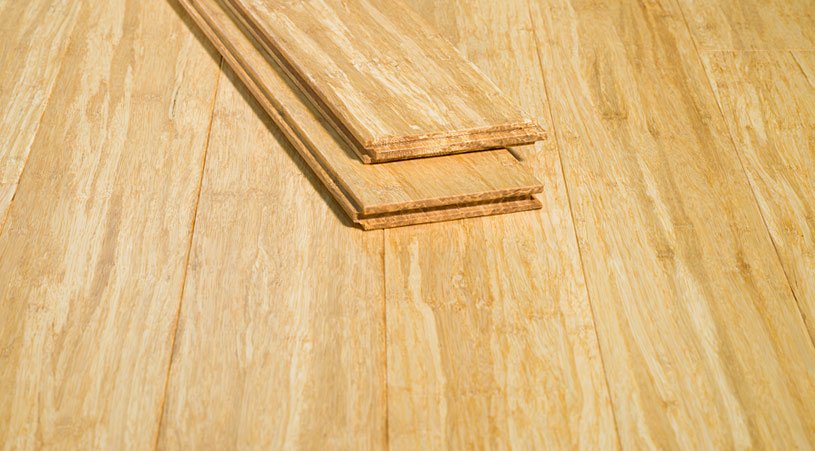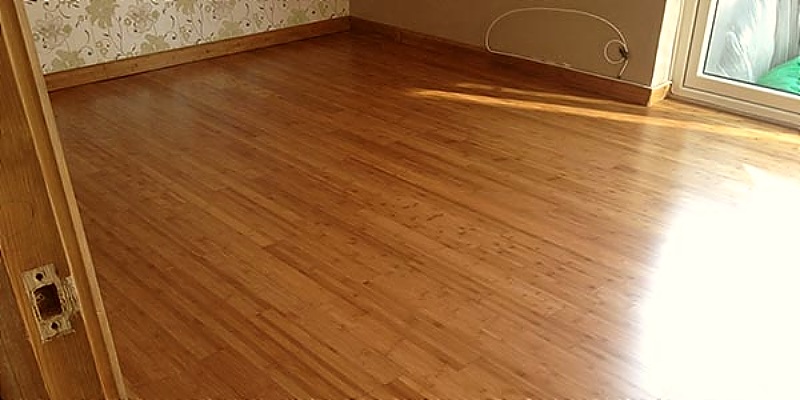Bamboo Flooring Overview: Cons and also pros
Bamboo Flooring Overview: Cons and also pros
Blog Article
We've found the article involving What to Know About Bamboo Flooring Before You Install down the page on the net and accepted it made perfect sense to share it with you on this page.
Bamboo flooring is renowned for many property owners due to its advantages. It has actually become the major choiced floor for company as well as house owners whenever there is requirement for sustainability.
Bamboo simply like wood, is at risk to dents and also cracking when humidity degrees vary.
Are you thinking regarding bamboo flooring for your house? We will likewise go over the various kinds of bamboo flooring available on the market.
Sorts Of Bamboo Flooring
There are three basic alternatives: strand-woven, vertical, as well as horizontal. Homeowners can select which kind of bamboo flooring to buy based upon their traits. The buyer's designated visual influences the picked Bamboo flooring kind.
Solid - Vertical Bamboo Flooring
Slim strips of completely dry bamboo wood glued vertically as well as pressed utilizing high warm and also stress produce this type of bamboo flooring.
The thinnest side of the bamboo planks will be in an upright kind. After that, a company bonding, pressing, and lamination will follow. Because of their technique of joining, the bamboo strips include a narrow grain pattern.
The advantage about this sort of bamboo flooring is that it is sturdy and really cost effective. It gives a stylish and also elegant flooring coating. But it is not widely offered.
Solid - Horizontal Bamboo Flooring
You will observe that this type is practically the same as upright bamboo flooring. Yet it has a slight variation. Horizontal bamboo is just one of the most prominent types of bamboo flooring.
It is made by drying out huge strips of bamboo, slicing these larger items into thinner strips, and afterwards gluing them to form planks. The boards will certainly then go through stress and warm to ensure they are well fastened.
Natural bamboo has a lighter color. Thus, the strips are typically discolored. While carbonized bamboo will be much less tough than normal bamboo, if you require a darker color, it might do you excellent. It also provides the all-natural bamboo looks and a range of choices.
Strand Woven Bamboo Flooring
Shredding the bamboo to extract the fibers is one of the much more drawing action in generating strand-woven bamboo floors.
The bamboo fiber is frequently mixed with an adhesive after it's made to a pulp. The material is then weaved and also compressed under wonderful warmth, as the name recommends.
After making horizontal and also upright bamboo, the strips offer to produce strand woven bamboo. The eco-conscious buyer might discover this feature appealing. The factor is that it makes sure that the entire bamboo stalk produces very little waste.
Engineered Bamboo Flooring
Both strong as well as engineered bamboo flooring alternatives are offered. As soon as the bamboo timber fits, it isn't easy to compare them.
But their distinctions are due to their making. Engineered bamboo timber has a slim plywood backing.
Whether engineered or solid, bamboo flooring is durable, resilient, and also appealing.
Engineered bamboo flooring utilizes the floating timber floor over a thin foam base. They might also be in the kind of large planks. For example, they are readily available in widths approximately 19 cm.
When Choosing Bamboo Flooring, attributes And What to Maintain in Mind
With a multi-layered covering, bamboo flooring will certainly be rather durable. However remember that future touch-ups could need a more skilled flooring specialist.
Using your finish will certainly make matching repair services simpler once established up in your home. Yet the surface will certainly not last as long as factory coatings.
Aside from that, here are some exciting features of bamboo flooring.
Long lasting
Bamboo flooring is not produced equal. There are numerous kinds of bamboo, as well as the different methods utilized to transform it right into planks affect its resilience.
Therefore, bamboo, like wood flooring, can become prone to deterioration with time. Likewise, scraping, breaking, as well as other wear and tear may take place. You can additionally sand some bamboo to appear like hardwood, but not all.
Cheap Upkeep
You can keep bamboo flooring in good condition by cleaning and also damp mopping. So despite being extra susceptible to scratches, bamboo flooring is really basic to maintain.
You may obtain bamboo floors that are like new by sanding them down as well as using a fresh coat of paint.
Eco-Conscious
This flooring originates from a natural plant called the bamboo plant. When compared to other tree types made use of to make wood flooring, bamboo grows more and quicker.
Profits
It's basic to know why bamboo flooring has ended up being a lot more favored nowadays. For nearly any kind of home, bamboo provides many strong and sound options for the atmosphere. Consequently, bamboo flooring may be the best option for updating your flooring.
We will also review the various types of bamboo flooring available on the market. Home owners can select which type of bamboo flooring to acquire based on their attributes. Horizontal bamboo is one of the most prominent types of bamboo flooring.
While carbonized bamboo will certainly be less tough than regular bamboo, if you require a darker color, it might do you good. After making vertical and also horizontal bamboo, the strips offer to create hair woven bamboo.
Bamboo Flooring
Manufacture of Bamboo Flooring
Stranded bamboo is made by shredding the bamboo stalks into small strands, which are compressed into sheets using heat and resin binders, then cut into planks to use as building materials. This form of flooring is available both as tongue-and-groove planks that are nailed down, as well as planks that float over the underlayment. This is a premium form of bamboo flooring, available in many colors.
Horizontal bamboo flooring is manufactured by cutting the strands into thin strips which are then glued together to form planks. This type of flooring has a "grain," since the long stalk fibers are visible in the flooring. This type of bamboo is not as hard or durable as stranded bamboo, but it can have a very striking appearance. It, too, is available both in nail-down planks and as floating floor planks.
Engineered bamboo flooring is made by bonding a thin layer of bamboo onto a plywood or MDF core. This flooring is comparable to engineered hardwood and is installed in the same way—usually with click-lock planks that float over a foam underlayment. It is the least expensive (and least durable) form of bamboo flooring, and it cannot be refinished.
Unless it is stained, most bamboo flooring has a natural blonde or amber color that resembles unfinished maple or birch, but darker tones are available through a process called carbonizing, which entails subjecting the planks to high temperatures. While the color can be very attractive, carbonized bamboo is softer than uncarbonized forms, and is more susceptible to scratching.
Eco-Friendliness
Environmentally conscious consumers are often drawn to bamboo as a wholly renewable resource. Unlike the hardwood lumber industry, where trees can take decades to mature, bamboo stalks grow so fast that there is little environmental liability to the harvest practices. Moreover, bamboo stalks that are cut simply continue to grow and replenish themselves so that they can be harvested.
But the manufacturing process creates other environmental concerns. Bamboo floor planks are manufactured by slicing or shredding the stalks of bamboo grass plants and then compressing the pulp back together using heat, pressure, and a resin-based adhesive identical to those used in many other flooring products. This adhesive often contains urea-formaldehyde that can outgas into the air.1
The level of adhesive used and the amount of toxins emitted will vary, depending on how the bamboo planks are manufactured. Cheaper products may contain more formaldehyde, while more expensive products may use alternative materials in the resins. The amount of formaldehyde used in bamboo flooring is similar to that found in engineered hardwood flooring or MDF sheathing, and it tends to be a problem only for sensitive individuals.2 But if this concerns you, look for bamboo products labeled as formaldehyde-free.
Bamboo Flooring Cost
This material is priced at about the same level as most hardwood floors. You can find bamboo flooring products ranging from about $2 to $8 per square foot, with a national average of $3.84 per square foot. Installation costs for bamboo flooring are much the same as for hardwood flooring. On average, figure on adding about $4 per square foot for installation labor in addition to the cost of materials. You should be able to get a good-quality bamboo installed for less than $10 per square foot, including materials and labor.
https://www.thespruce.com/benefits-and-drawbacks-of-bamboo-floors-1314694

We hope you enjoyed reading our article on How to Clean Bamboo Floors. Thanks a lot for finding the time to read our piece of content. If you liked our post kindly be sure to share it. We recognize the value of reading our article about Bamboo Flooring. Report this page